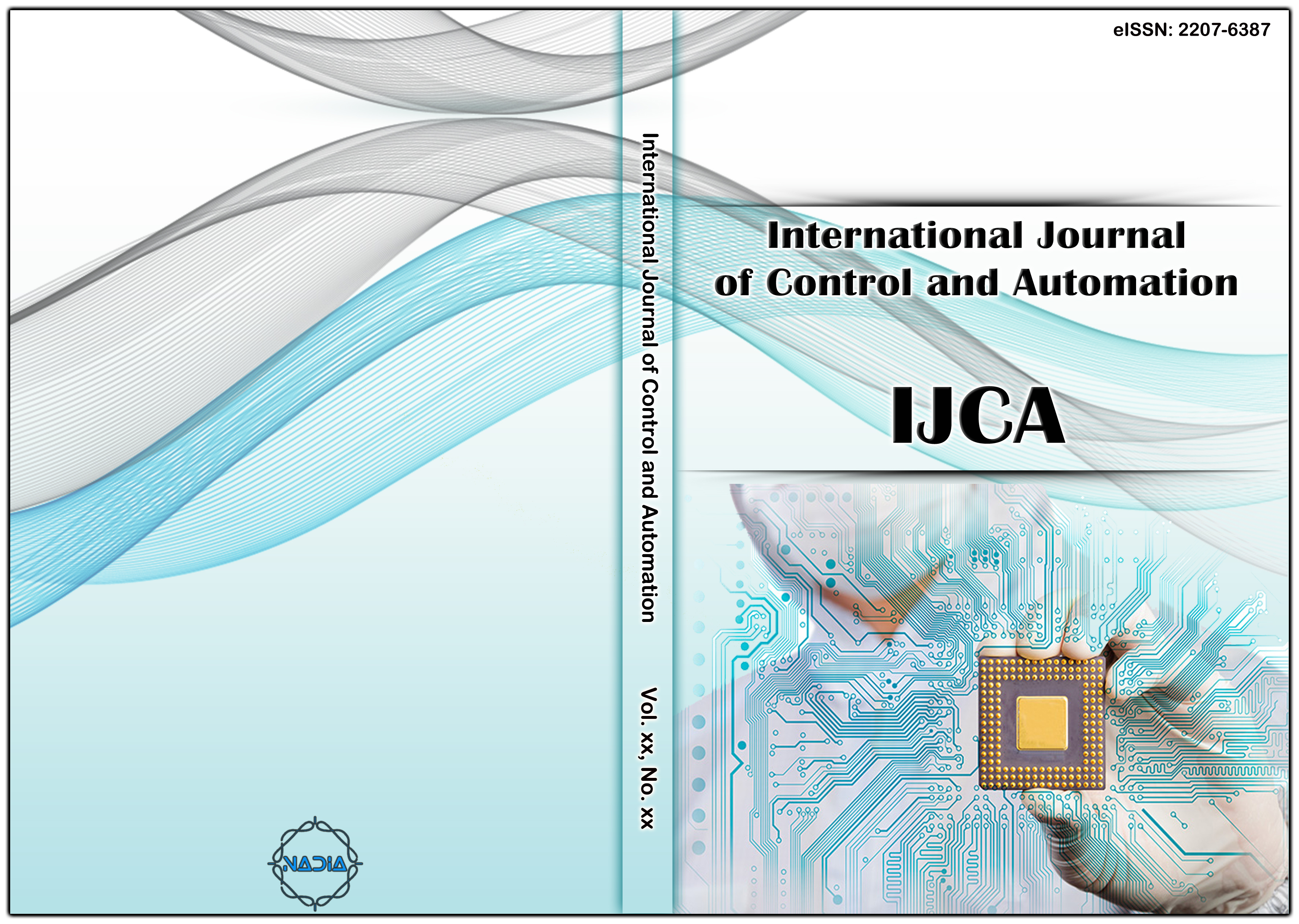[1] Jingcheng Gao, Yang Xiao, Jing Liu, Wei Liang, C.L. Philip Chen. A survey of communication/ networking in Smart Grids. Future Generation Computer Systems 28. (2012) 391–404.
[2] Henrik Lund, Anders N. Andersen, Poul Alberg Østergaard, Brian Vad Mathiesen, David Connolly. From electricity smart grids to smart energy systems - A market operation based approach and understanding. Energy 42 (2012) 96-102.
[3] Mhadhbi, Zeineb, Zairi, Sajeh, Gueguen, Cedric and Zouari, Belhassen. Validation of a Distributed Energy Management Approach for Smart Grid Based on a Generic Colored Petri Nets Model. Journal of Clean Energy Technologies, Vol. 6, No. 1, January 2018.
[4] Ma, Weiwu, Fang, Song, Liu Gang and Zhou Ruoyu. ‘Modeling of district load forecasting for distributed energy system’. Review article. Applied Energy, Vol. 204, (October 2017) pp. 181-205. 15. doi.org/10.1016/j.apenergy.2017.07.009.
[5] Ait Si Larbi El Yasmine, Belalem Ghalem, Beldjilali Bouziane, Towards a scalability approach for risk mitigation in electrical systems, Int. J. Knowledge Engineering and Data Mining, Vol. 5, Nos. 1/2, 2018.
[6] Yuksel, Murat and Kalyanaraman Shivkumar. Elasticity Considerations for Optimal Pricing of Networks. Published in ISCC, 2003. DOI:10.1109/ISCC.2003.1214117.
[7] Addabbo, Tommaso, Fort Ada, Mugnaini Marco and Vignoli Valerio. (November 2017) ‘Distributed UPS control systems reliability analysis’. Original research article. Measurement, Vol. 110, pp. 275-283. DOI: 10.1016/j.measurement. 2017.06.021.
[8] Liu Yishen. (2017) ‘Estimating the Elasticity of Supply of Housing Space Rather than Units’. Original research article. Regional Science and Urban Economics, In press, accepted manuscript, Available online 28 October 2017. doi.org/10.1016/j.regsciurbeco.2017.10.013.
[9] Bakhat, Mohcine, Labandeira Xavier, Labeaga José M., López-Otero Xiral. (2017) ‘Elasticities of transport fuels at times of economic crisis: An empirical analysis for Spain’. Original research article. Energy Economics, In press, accepted manuscript, Available online 24 October 2017. doi.org/10.1016/j.eneco.2017.10.019.
[10] Lehrig, Sebastian, Sanders Richard, Brataas Gunnar, Cecowski Mariano Simon Ivanšek and Polutnik Jure. (2018) ‘CloudStore — towards scalability, elasticity, and efficiency benchmarking and analysis in Cloud computing’. Original research article. Future Generation Computer Systems, Volume 78, Part 1, pp. 115-126, January 2018. DOI: 10.1016/j.procs.2015.09.225.
[11] Beltrán, Marta, (2016) ‘BECloud: A new approach to analyse elasticity enablers of cloud services’. Original research article. Future Generation Computer Systems, Vol. 64, pp. 39-49, November 2016. doi.org/10.1016/j.future.2016.05.014.
[12] Cibrario Bertolotti, Ivan, Durante Luca, Seno Lucia and Valenzano Adriano. (2015) ‘A Twofold Model for the Analysis of Access control policies in industrial networked systems’. Computer Standards & Interfaces, 42, pp.171–181. doi.org/10.1016/j.csi.2015.05.002.
[13] Slade, Stephen, Case-Based Reasoning: A Research Paradigm, AI Magazine Volume 12 Number 1 (1991) (© AAAI), 0738-4602/90/$4.00 ©1990 AAAI.
[14] Ketler, Karen, Expert Systems with Applications. Volume 6, Issue 1, January–March 1993, Pages 3-8, https://doi.org/10.1016/0957-4174 (93) 90014-W, Available online 14 February 2003.
[15] Leake, David B., Case-Based Reasoning: Experiences, Lessons and Future Directions, Book, 1st MIT Press Cambridge, MA, USA ©1996 ISBN:026262110X.
[16] Minor Mirjam and Marx Lutz. Case-Based Reasoning for Inert Systems in Building Energy Management; Proceedings of the International Conference on Case-Based Reasoning; Trondheim, Norway. 26–28 June 2017; pp. 200–211.
[17] González-Briones Alfonso, Prieto Javier, De La Prieta, Fernando, Herrera Viedma Enrique and Corchado, Juan M. Energy Optimization Using a Case-Based Reasoning Strategy. Sensors (Basel). 2018 Mar; 18(3): 865. Published online 2018 Mar 15. doi: 10.3390/s18030865.
[18] Humphreys Paul, McIvor Ronan, Chan Felix, Using case-based reasoning to evaluate supplier environmental management performance, Expert Systems with Applications. Volume 25, Issue 2, August 2003, Pages 141-153., https://doi.org/10.1016/S0957-4174 (03) 00042-3.
[19] Kwon Ohbyung, Im Ghi Paul, Lee Kun Chang, ‘MACE - SCM: A multi agent and case -based reasoning collaboration mechanism for supply chain management under supply and demand uncertainties’, Expert Systems with Applications Volume 33, Issue 3, October 2007, Pages 690-705, , https://doi.org/10.1016/j.eswa.2006.06.015.
[20] electropedia [online] http://www.electropedia.org/iev/iev.nsf/display?openform&ievref=601-01-26. Accessed in 23/11/2017.
[21] iec [online] http://www.iec.ch/whitepaper/pdf/iecWP-globalenergyinterconnection.pdf, Accessed in 23/11/2017 .
[22] Giroire Frédéric, Modrzejewski Remigiusz, Nisse Nicolas, Pérennes Stéphane (2017) ‘Maintaining balanced trees for structured distributed streaming systems’. Original research article. Discrete Applied Mathematics, Vol.232, pp. 176-188. 11 December 2017. doi.org/10.1016/j.dam.2017.07.006.
[23] Lambert, Douglas M. and Cooper Martha C. (2000) ‘Issues in supply chain management’. Industrial Marketing Management, 29(1), pp. 65-83. DOI: 10.1016/S0019-8501(99)00113-3.
[24] Pham, T.H. Thi (2006). ‘Influences de la production décentralisée sur la gestion des infrastructures critiques des réseaux de puissance’. Energie électrique. Institut National Polytechnique de Grenoble - INPG. . (French).
[25] Watson, Ian D., 1999, 'Case-based reasoning is a methodology not a technology', Knowledge-Based Systems, vol 12, no. 5-6, pp. 303-308.
